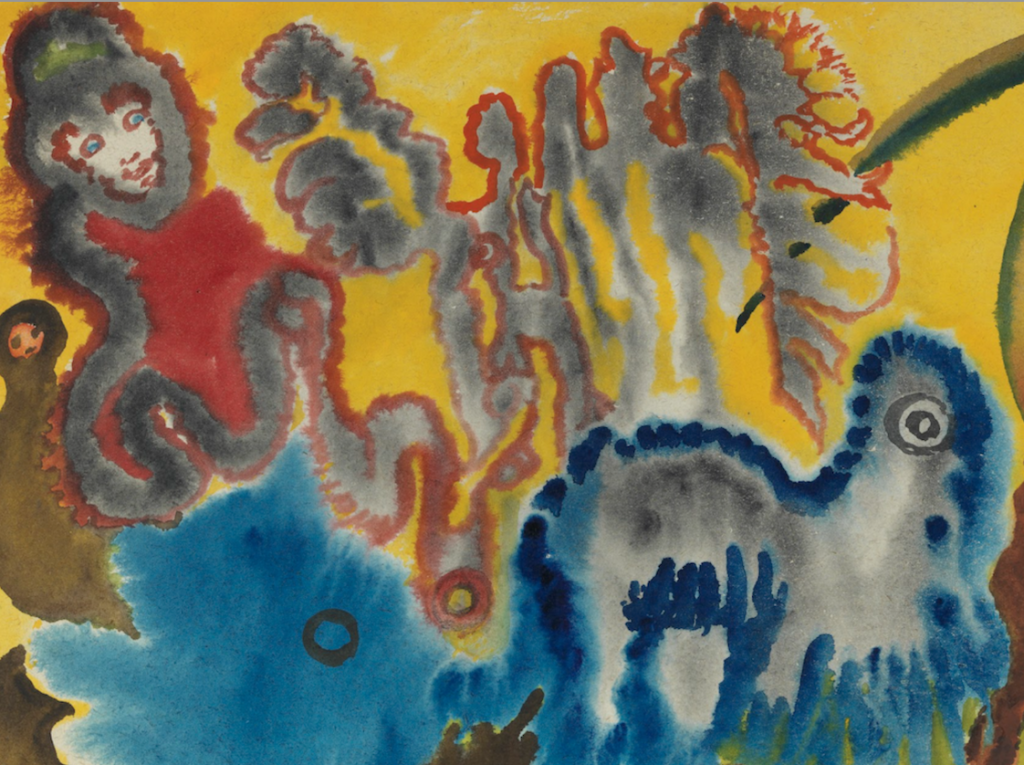Grace Pailthorpe
Born 1883 Surrey ~ Died 1971

Grace Winifred Pailthorpe was born on 29 July 1883 in Sutton, Surrey. She was part of a religious family, the daughter of Edward Wright Pailthorpe (1854-1904) and Anne Lavinia Pailthorpe (née Green, 1853-1918) Her father was a prominent stockbroker and her mother was a seamstress. Grace was the third child of ten and the only daughter.
Pailthorpe had many occupations. She was a surgeon during the First World War, a psychoanalyst, a criminologist, a campaigner for reform including the suffrage movement, founder of the Institute for the Study and Treatment of Delinquency and a surrealist artist.
Pailthorpe qualified as a Doctor in 1914 and worked throughout the war as a surgeon, returning to Britain in 1917 taking prominent positions in several London hospitals. She took a particular interest in psycho-analysis which was a fledgling science and undertook investigations into the unconscious.
In 1935 Pailthorpe met Reuben Mednikoff and together they began research into the psychology of art. They contributed to the International Surrealist Exhibition held in London during 1936 where Pailthorpe’s paintings and drawings were greatly praised by André Breton. In 1938 Pailthorpe published The Scientific Aspect of Surrealism which was not well received by other British Surrealist artists. In this, and later works, she put forward the theory that surrealism and psychoanalysis were both means to personal liberation and the development of artistic creativity and freedom of expression. She and Mednikoff undertook analysis of each other’s art to determine the associations behind each image. Regarding this as an alternative to conventional analysis, they would swap the roles of patient and analyst between themselves every fortnight. Although Pailthorpe presented the results of these unorthodox studies in lectures to colleagues, the studies were not published during her lifetime. After a series of disagreements about organisation and exhibition spaces, Pailthorpe and Mednikoff were “formally” expelled from the British Surrealist group in 1940.
At this time Pailthorpe carried out a series of experiments in automatic drawing where she invited a charlady to draw with a group of artists in an attempt to prove that anyone was able to draw in this way which was important in psychic and surrealist circles. The results appeared in a double page spread of the Picture Post. Today, the debate between creativity arising from a subconscious or spiritual realm remains as hotly discussed as ever before. Grace Pailthorpe is an interesting character in the history of automatism who is becoming increasingly important to art historians and museum curators. Her work is now represented in the Tate Gallery.
Selected Exhibitions
2025 Tranceducers: Art of Visionaries, Mediums and Automatists
2022 Grace Pailthorpe: Chance Encounters in Colour Farleys House and Gallery
2022 Creative Spirits The College of Psychic Studies
2021 Fertile Spoon at the Bosse and Baum Gallery
2019 A Tale of Mother’s Bones: Grace Pailthorpe, Reuben Mednikoff and the Birth of Psychorealism at Camden Arts Centre
1998 Sluice Gates of the Mind Leeds City Art Gallery
1992 Women Artists of the British Surrealist Movement, 1930-1990.
1986 Angels of Anarchy, Leeds City Art Gallery
